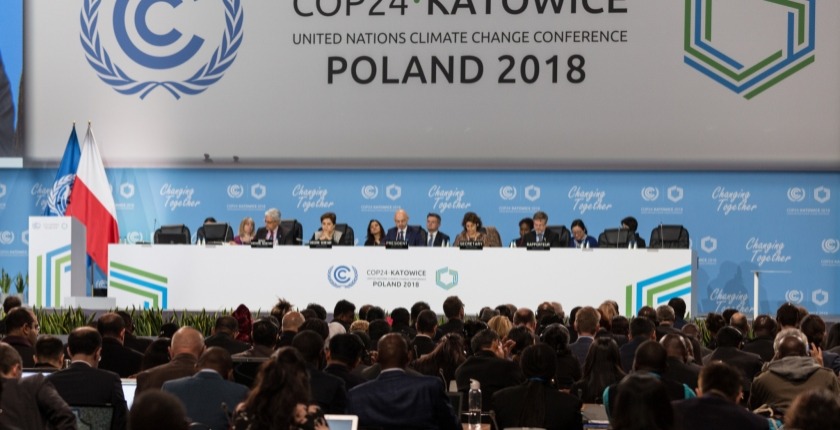News - December 10, 2018
Climate finance: the developed world’s “moral imperative”


Written by Tristan Lebleu
In 2015, during COP21, the world had come to a - Paris - agreement in which rich countries committed to provide $100bn a year in climate finance to poorer nations by 2020. This written accord was a major step. However, not much was said about how the cash would flow, which is why money has been a central part of COP24 in Katowice, sometimes referred to as “Paris 2.0”. “Climate finance is a critical part of the Paris Agreement, and if you don’t have that, the global agreement doesn’t work” says Simon Wilson, Head of Communications at the Green Climate Fund, met at the GCF’s booth in the COP24.
Climate finance includes all types of funding to help developing countries do two things: transition to clean economies and adapt to the impacts of climate change. “There’s a moral imperative that we need to deal with” adds Simon Wilson. Indeed, for 150 years, developed countries have been relentlessly emitting carbon emissions during their industrialisation, which are now having massive impacts on the developing world. Now, the latter are asking the former to pay for the clean-up.
“It’s also a matter of global solidarity. There’s no point in taking actions against climate change unless you do it around the world. GHG are not confined to one part of the atmosphere. So that means we need to make sure everyone can act together. Practically speaking, developing countries do not have the resources to make these transitions, unless we provide funding. Climate funding is about making sure they can deliver these transformations” explains Simon Wilson.
Now, climate finance negotiations are stuck in two major discussions: how much money is put on the table, and what exactly is taken into account when calculating it. According to a report from OECD public climate finance from developed to developing countries increased from USD 37.9 billion in 2013 to USD 54.5 billion in 2017. But this report has been received with much criticism, especially from major developing economies, such as China, Brazil, South Africa, and India. As Romain Weikmans and Timmons Roberts state in a Brookings article “the new OECD report confirms our belief that there is still no number that could be arrived at that would be credible to all parties in the climate negotiations. This is because the question of what counts as “climate finance” is still not internationally agreed-upon under the UNFCCC”.
Counting the billions, and arguing about what should or should not be counted as climate finance, actually misses the point. At COP24, Patricia Espinosa urged developed countries to deliver on their promises: “we need to see more efforts towards scaling up climate finance flows while at the same time scaling down financing and investments in high-emissions activities and we need to see it urgently. We no longer have the luxury of time”.
Climate change mitigation and adaptation have the potential to launch a new industrial revolution or, as some put it, a new “Green Deal”. In an open letter from Bertrand Piccard, he addressed COP24 negotiators by saying: “thanks to technological developments, the fight against global warming is no longer a constraint. Quite the contrary: it has become a huge opportunity”.
More details on Climate Finance Flows:
To understand just how complex flows of climate finance are, Jocelyn Timperley from Carbon Brief, has written this comprehensive article: "Interactive: How climate finance ‘flows’ around the world".
"This diagram shows the average yearly amount of climate finance given by each OECD country on average in 2015 and 2016, and where that money went. Donor countries are listed down the left-hand side of the diagram. The right-hand side shows the amounts which flowed to recipient countries or regions" explains Jocelyn.
Credit: A Flourish data visualisation
Written by Tristan Lebleu on December 10, 2018


